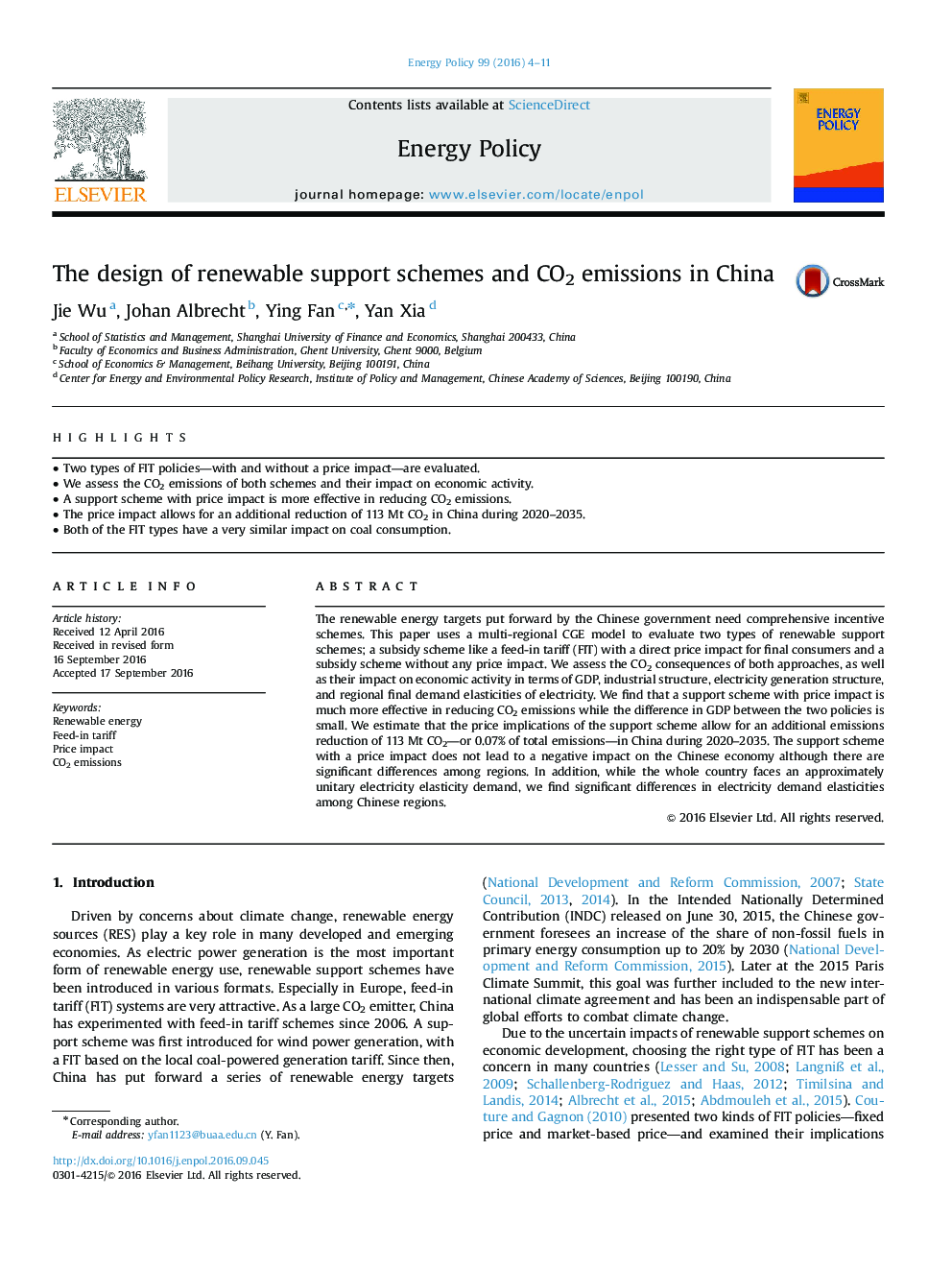| Article ID | Journal | Published Year | Pages | File Type |
|---|---|---|---|---|
| 5106258 | Energy Policy | 2016 | 8 Pages |
Abstract
The renewable energy targets put forward by the Chinese government need comprehensive incentive schemes. This paper uses a multi-regional CGE model to evaluate two types of renewable support schemes; a subsidy scheme like a feed-in tariff (FIT) with a direct price impact for final consumers and a subsidy scheme without any price impact. We assess the CO2 consequences of both approaches, as well as their impact on economic activity in terms of GDP, industrial structure, electricity generation structure, and regional final demand elasticities of electricity. We find that a support scheme with price impact is much more effective in reducing CO2 emissions while the difference in GDP between the two policies is small. We estimate that the price implications of the support scheme allow for an additional emissions reduction of 113 Mt CO2-or 0.07% of total emissions-in China during 2020-2035. The support scheme with a price impact does not lead to a negative impact on the Chinese economy although there are significant differences among regions. In addition, while the whole country faces an approximately unitary electricity elasticity demand, we find significant differences in electricity demand elasticities among Chinese regions.
Related Topics
Physical Sciences and Engineering
Energy
Energy Engineering and Power Technology
Authors
Jie Wu, Johan Albrecht, Ying Fan, Yan Xia,
